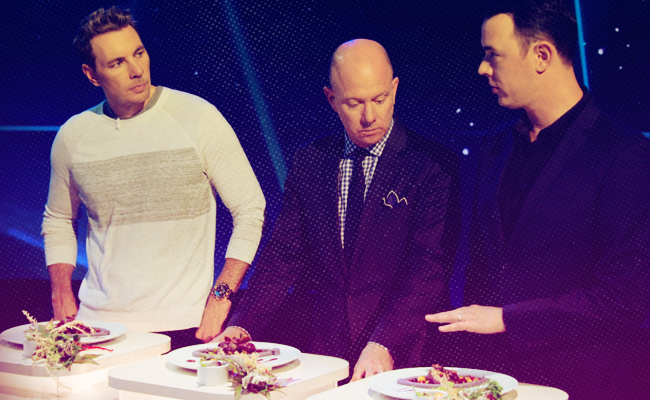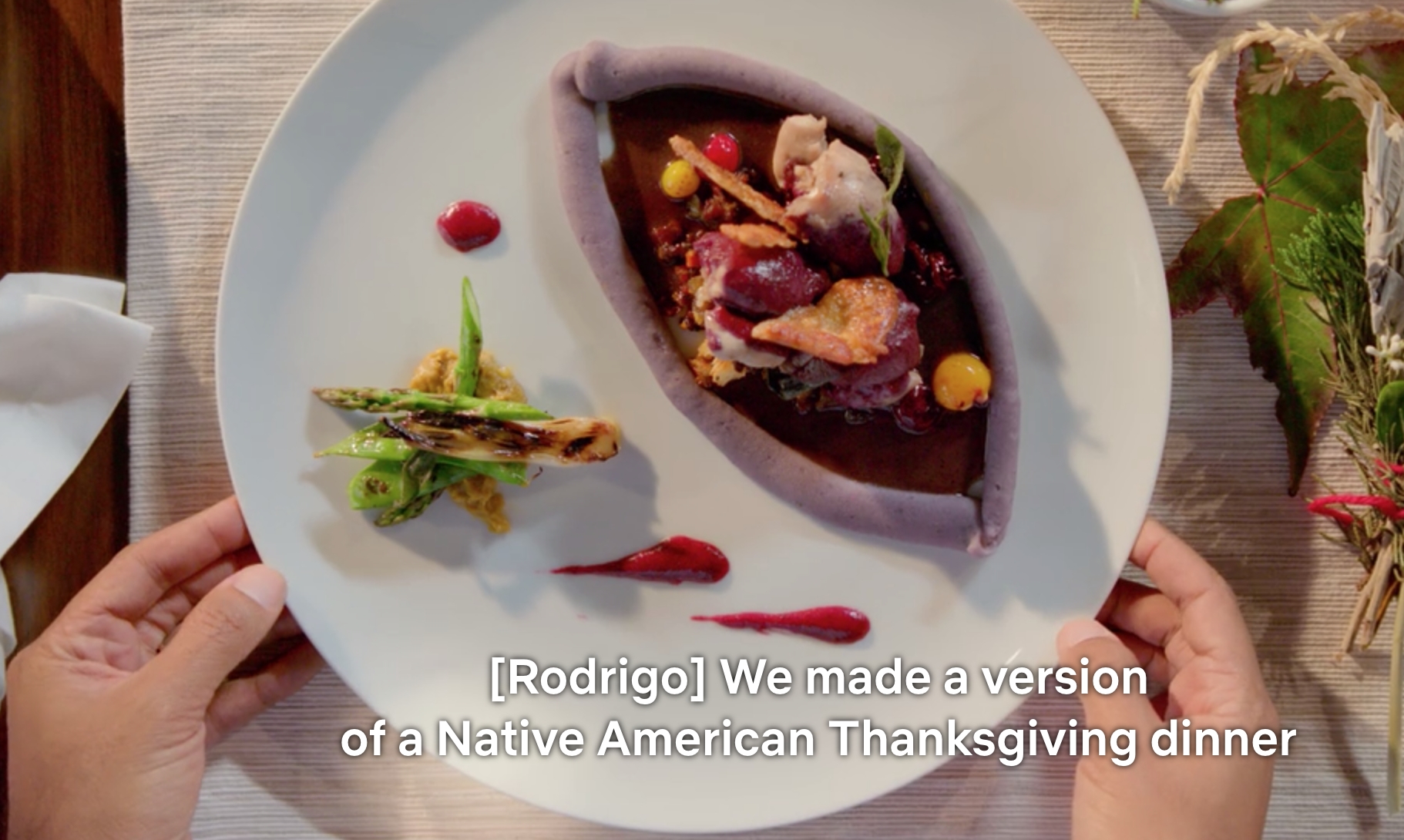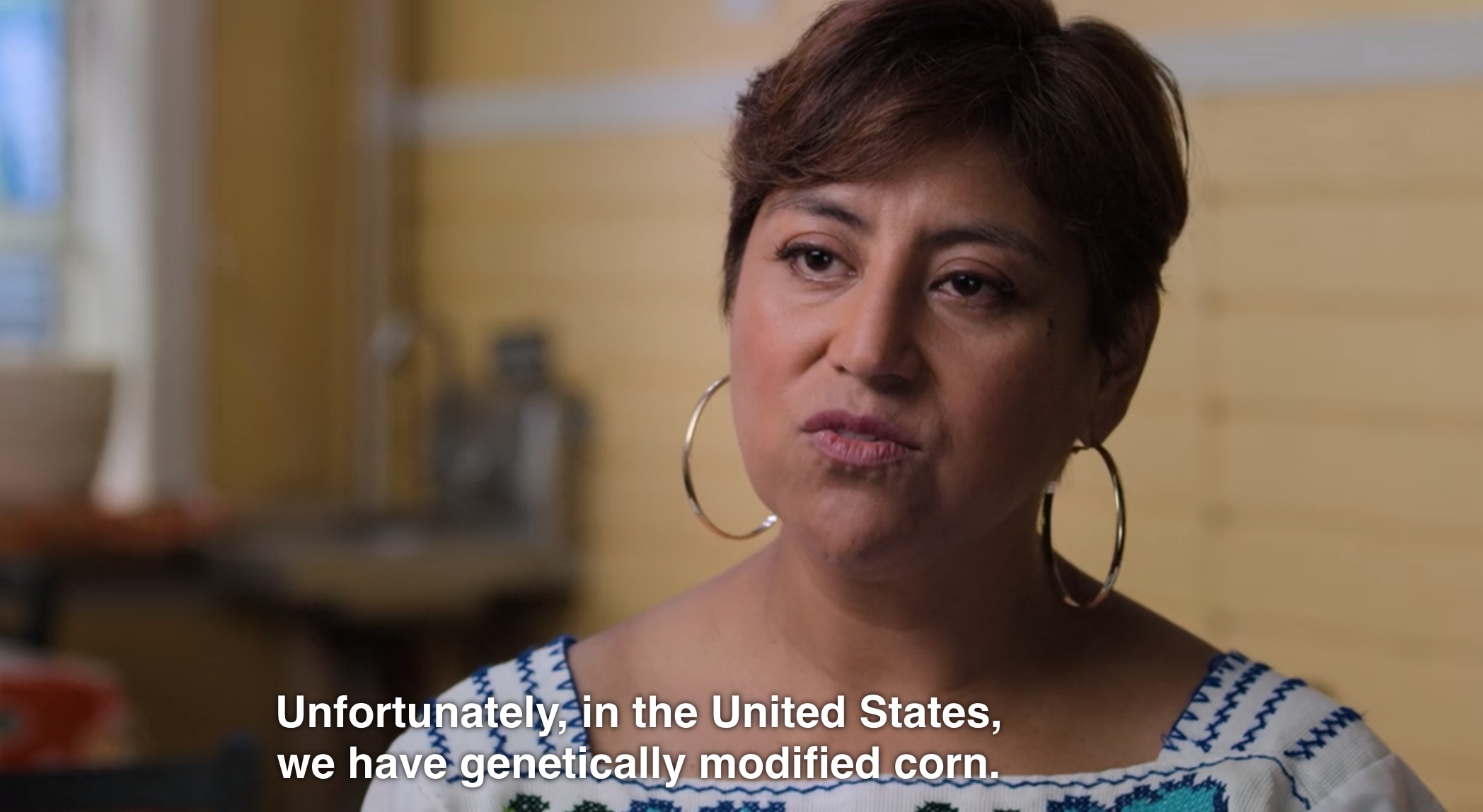
Fact 1: Food TV has never been more diverse.
Fact 2: It’s still not diverse enough.
Fact 3: As inclusion has increased, Indigenous Americans have been entirely left out of the conversation.
This is to the detriment of food culture, especially in relation to the Americas — something that was made painfully obvious in Netflix’s new food competition, The Final Table. Being a food writer and former kitchen grunt, I gave the highly binge-able cooking competition a whirl. It’s a pretty decent show, for the most part. Cultures are celebrated, the talent level is extremely high, and there are some fun cameos. For that format, I think Nigella Lawson, Anthony Bourdain, and Ludo Lefebvre’s The Taste had a bit more bite, but still… good stuff.
All was going along swimmingly until I arrived at the Thanksgiving episode. Or rather the “United States Episode” which declared Thanksgiving dinner to be our nation’s greatest-ever contribution to the culinary conversation. In one short hour, the show eroded all the goodwill it had earned with me.
For what it’s worth, I’m wholly behind “traditional” Thanksgivings. What’s great about American Thanksgiving is that regionally and culturally the meal is adaptable. I’ve been at tables where ravioli was the highlight or stewed red cabbage or ribs. Yes, turkey, stuffing, etc. is the normcore version of Thanksgiving the Don Drapers of Madison-Avenue-yesteryear sold us on. But ultimately, where we come from defines the nuance of every Thanksgiving meal around the country. It’s a meal that opens itself up to endless interpretations. And that’s cool.
So, when Dax Shepard, Colin Hanks, and — does a quick Google search — Sam Sifton showed up to judge the Thanksgiving episode, I felt a huge letdown. Look, Shepherd is there for comic relief and he brings it. The man is very charming. But three of the whitest white dudes on earth judging a Thanksgiving challenge feels off in 2018. (This was also the first time all season that the three-judge panel had been all male.)

After raving to friends about the deeply respectful Mexico episode, I suddenly had Colin-izer Hanks settler-splaining to the only chefs who dared use Indigenous American ingredients in their dish that they were wrong for doing so. No one argued with him (not even the food critic who works at the NYTimes, a paper that championed Sean Sherman) so the duo — who literally framed their whole dish around the Native American foodway — ended up in the bottom three, facing elimination.
Truth be told, I’m not really angry at Hanks or Shepard here. When Hanks is asked about “American” food, he immediately says “hamburgers.” Which, sure. But, bro, those are German. Maybe German-American if you want to be pedantic about it — the same way that spaghetti and meatballs are Italian-American, you know?
Again, it’s not Hanks’ fault here. We live in a society that has completely disassociated their native foods and people from mainstream society and replaced them with migrant foods and people. So, it’s not really Hanks’ fault he doesn’t know better. You don’t blame the student in that situation, you blame the teacher for not teaching the whole curriculum.
I get that the average American is still in the dark about Indigenous people, culture, and food. So, when an episode like The Final Table’s Thanksgiving show drops, I’m more disappointed than angered. Netflix’s Chef’s Table, on the other hand, is a bit more troubling.

I was very excited about the new season of Chef’s Table. The chefs they chose were interesting and accessible. It felt like a win. Then I watched the Cristina Martinez episode. The lack of basic awareness of Indigenous life, foods, and cultures was confounding. I can forgive a show like The Final Table with their Ryan-Seacrest-type host. But, Chef’s Table is more than that. These are the people who are helping to define food culture in the 21st century.
The episode centers on a baffling section about how the kitchen crew had to “smuggle” corn from Mexico because… America doesn’t grow corn? I found this maddening in the sense that 1) it’s making a native product seem foreign, and 2) it suggests that there’s not real corn grown in the United States, that it’s not a traditional food here, or that there aren’t still people growing it traditionally.
Naturally, a white settler was behind the camera for this episode. And while it is deeply respectful of Martinez’s Aztec heritage and food, here you have an Indigenous American food that’s treated as if it’s from far away. In fact, that’s how all of Cristina Martinez’s food is treated. It’s exotic. It’s from somewhere else. It’s never asked why this corn needs to be “smuggled” into Philadelphia. It’s framed as if the food and the chef are bringing something from “another” country to a new place. The viewer is never reminded that ancient Indigenous foods didn’t have borders.
What compounded my frustration is that we’ve seen good balances of Euro-American and Indigenous American food on the same stage. Season 12 of Top Chef featured an episode about “Authentic” Thanksgiving ingredients and actually included the Wampanoag in the show. None of the food was othered. Instead, the food was celebrated as an alternative meal that all Americans could indulge in. Hell, even conservationist like Steven Rinella, of Netflix’s MeatEater, cooks venison on Thanksgiving because that’s what was eaten back then.
There is resistance to the narrative. Cracks are starting to form.
Aside from a few outliers, why is Indigenous food not getting on your screen and why, when it does, are there often fatal flaws in the presentation? Distance, cultural extermination, colonial suppression all play a role. You’ll still get journalists and editors refusing to capitalize “Indigenous food” even though they’d never write “german food” in a million years. Then, of course, there’s a lack of any real representation in pop culture of Indigenous peoples. With the exception of Jason Momoa, Indigenous actors are still largely sidelined in mainstream Hollywood. When you pull the receipts, there really hasn’t been a mainstream show that featured a broad range of Indigenous cast members (in a positive light) on the air since Northern Exposure back in the early 1990s. That lack of diversity of the people actually from North America has a deleterious effect every single day that it continues.
So, what happens next? Executives and showrunners need to hire Indigenous writers, producers, and directors, and people in food TV need to feature more Indigenous chefs on cooking shows. This is about seeing a gap in knowledge as an opportunity for change.
Whether big hitters like Netflix embrace this is a question mark. The past has taught us that when it comes to Indigenous Americans, doubling down on exclusion is the norm. Can they get away with that in the age of social media connectivity? We’ll see. The next season of Chef’s Table is already in the can — so, there’s little expectation for any real change there in the near future.
But there’s always the season after that. Nothing is stopping Netflix from offering Indigenous Americans an actual voice behind and in front of the camera when it comes to discussing the food of the land that was stolen from them in the first place.






